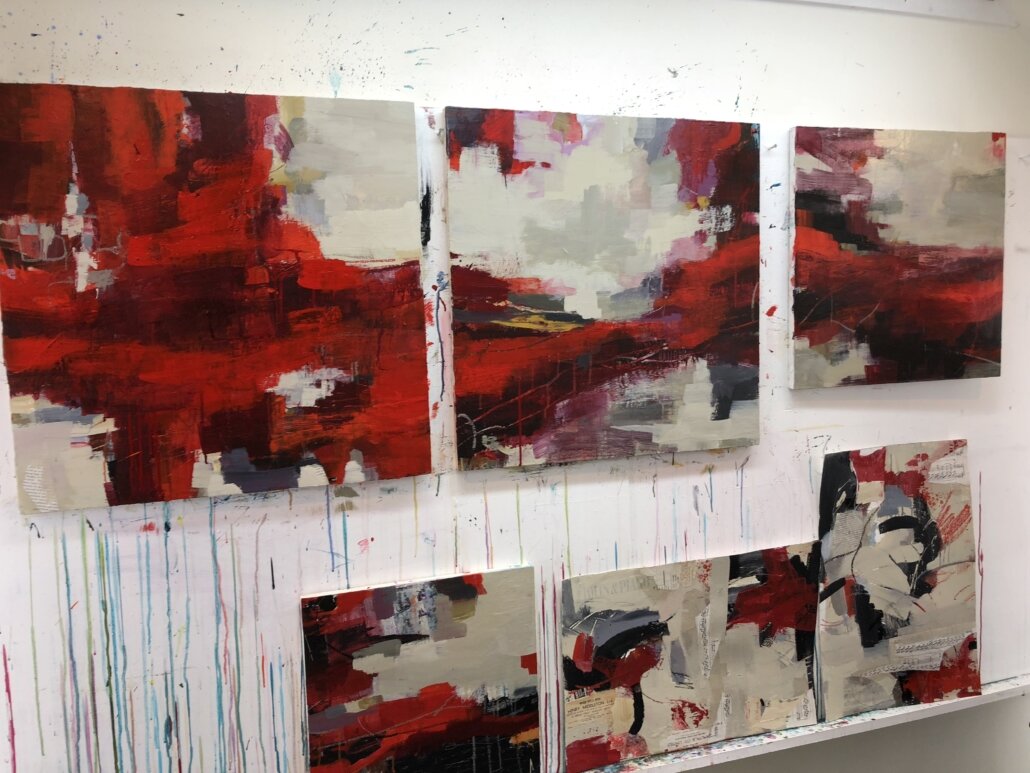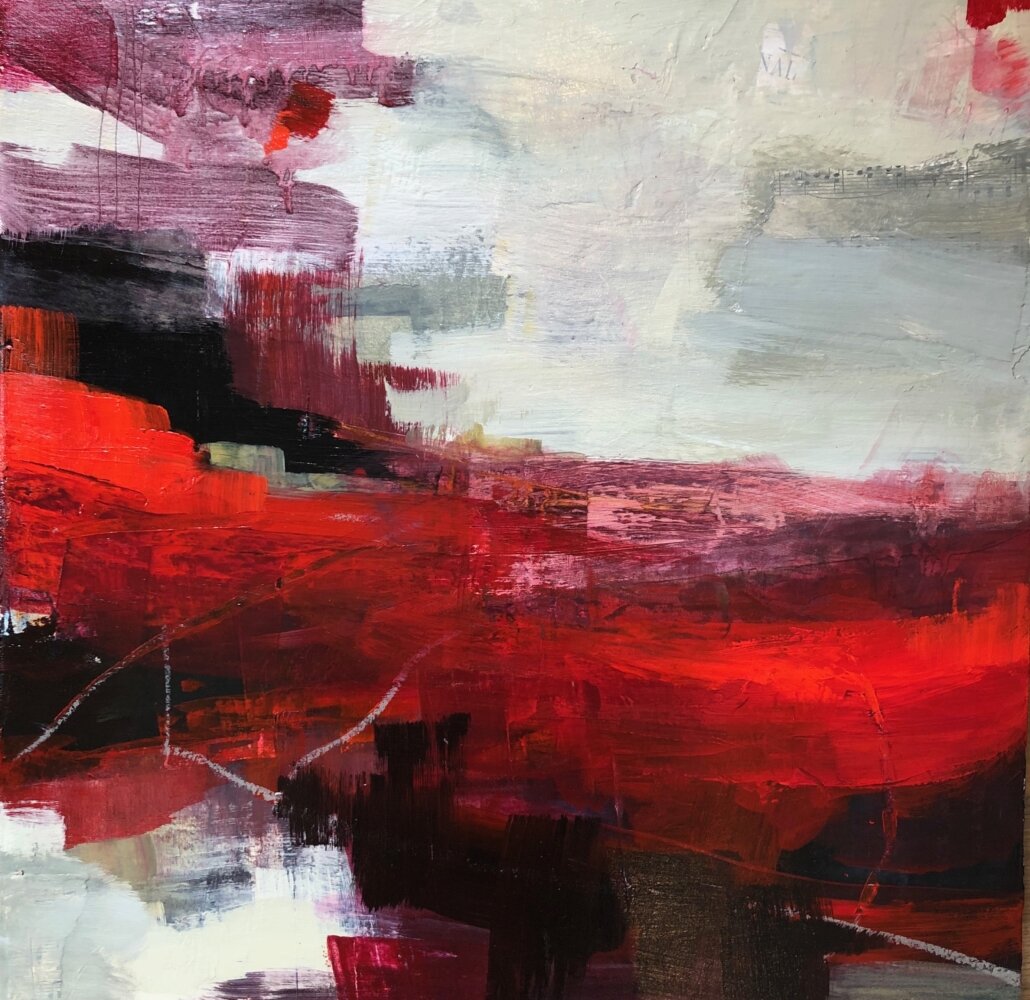Ignoring All Those Voices
The inside of my head used to be like a town centre on a Saturday afternoon - crowded and noisy!The people in there had opinions on all my choices, and all my actions (including life choices but let's keep this to art!) And funnily enough, their opinions always tended towards the negative, no matter what choices I made.
A key part of my development as an artist has been silencing those voices. And the only way I know to do that is to listen to each one, truly hear what it has to say, and then politely ignore it.Acknowledging the voices has been important for me - if we don't recognize what we are telling ourselves, there is this constant soundtrack in the background, influencing everything we do but never being confronted.My inner dialogue might go something like:"Oh, you think I shouldn't use this colour palette because I've already made two paintings with it? You think a 'real artist' would move on and do something else? Got it! I don't agree - but thank you for sharing!"An interesting thing happens once you silence the voices inside your head ... you start to get better at ignoring the external ones. You know the ones - we all have a spouse or friend or family member or fellow artist who doesn't understand or like what we are doing.Everyone is entitled to their opinion - but they are not entitled to have it matter to us.As an example, this painting has drawn the most attention at my show. It's not one of the ones that sold, but it has been praised by many of the visitors and several people have asked about prints.I mentioned the positive reactions to a friend who visited last week and bought a (different) painting."Oh no!' she said, "I don't like that one at all!" She then proceeded to tell me what she felt was wrong with it.I know that the old me would have been thrown by this. After all, this is a person who likes my work enough to buy a piece. "Maybe she's right," I would have thought. "Maybe I need to avoid those colours in future."But that didn't happen. Her comments washed over me. Because now I know that the praise and the criticism are one and the same - they live outside me. They are not my concern.My only job is to make work that I love; to do my very best at any given moment, and then to keep getting better, so that I feel new work is even better than past work. That's it.So what does this look like in practice?My newest series is underway. There are currently 6 pieces in progress and I may add one more.
It's not one of the ones that sold, but it has been praised by many of the visitors and several people have asked about prints.I mentioned the positive reactions to a friend who visited last week and bought a (different) painting."Oh no!' she said, "I don't like that one at all!" She then proceeded to tell me what she felt was wrong with it.I know that the old me would have been thrown by this. After all, this is a person who likes my work enough to buy a piece. "Maybe she's right," I would have thought. "Maybe I need to avoid those colours in future."But that didn't happen. Her comments washed over me. Because now I know that the praise and the criticism are one and the same - they live outside me. They are not my concern.My only job is to make work that I love; to do my very best at any given moment, and then to keep getting better, so that I feel new work is even better than past work. That's it.So what does this look like in practice?My newest series is underway. There are currently 6 pieces in progress and I may add one more. Towards the end of my last series, I became fascinated by working with red and I now want to push it further. I'm seeking to create depth and to make the reds really glow. I'm doing this by working with a limited palette (yellow ochre, black, white, 3 different cadmium reds and Alizarin crimson) and by using that palette in specific ways. I am layering desaturated reds with more saturated ones and using a very pale and desaturated version of green (red's complement) in the lighter areas along with a light grey. My aim is to make red as beautiful as it can possibly be - as 'red' as it can possibly be!Of course, the old voices kicked in as soon as I started to lay out my palette, and as I placed an order for yet more cadmium red light. ("Aren't people just going to think all you can do is paint with red? Shouldn't you mix it up a little bit?)But they hold no sway. I feel pulled to do this and so I know it is the right thing to be doing. I trust that the reason will become clear later.And although I am working with the same palette, I have switched things up a little bit. Starting with any intention is a shift for me. In the past I have worked intuitively until something interested me and then worked to develop that into a painting. This time, I know what I want to achieve and I am establishing the design and values (darks and lights) first. I am now at the stage of adding interest and depth through layering.There is still a way to go but I am pleased with my progress.
Towards the end of my last series, I became fascinated by working with red and I now want to push it further. I'm seeking to create depth and to make the reds really glow. I'm doing this by working with a limited palette (yellow ochre, black, white, 3 different cadmium reds and Alizarin crimson) and by using that palette in specific ways. I am layering desaturated reds with more saturated ones and using a very pale and desaturated version of green (red's complement) in the lighter areas along with a light grey. My aim is to make red as beautiful as it can possibly be - as 'red' as it can possibly be!Of course, the old voices kicked in as soon as I started to lay out my palette, and as I placed an order for yet more cadmium red light. ("Aren't people just going to think all you can do is paint with red? Shouldn't you mix it up a little bit?)But they hold no sway. I feel pulled to do this and so I know it is the right thing to be doing. I trust that the reason will become clear later.And although I am working with the same palette, I have switched things up a little bit. Starting with any intention is a shift for me. In the past I have worked intuitively until something interested me and then worked to develop that into a painting. This time, I know what I want to achieve and I am establishing the design and values (darks and lights) first. I am now at the stage of adding interest and depth through layering.There is still a way to go but I am pleased with my progress.
 I'm excited to see what happens next!
I'm excited to see what happens next!